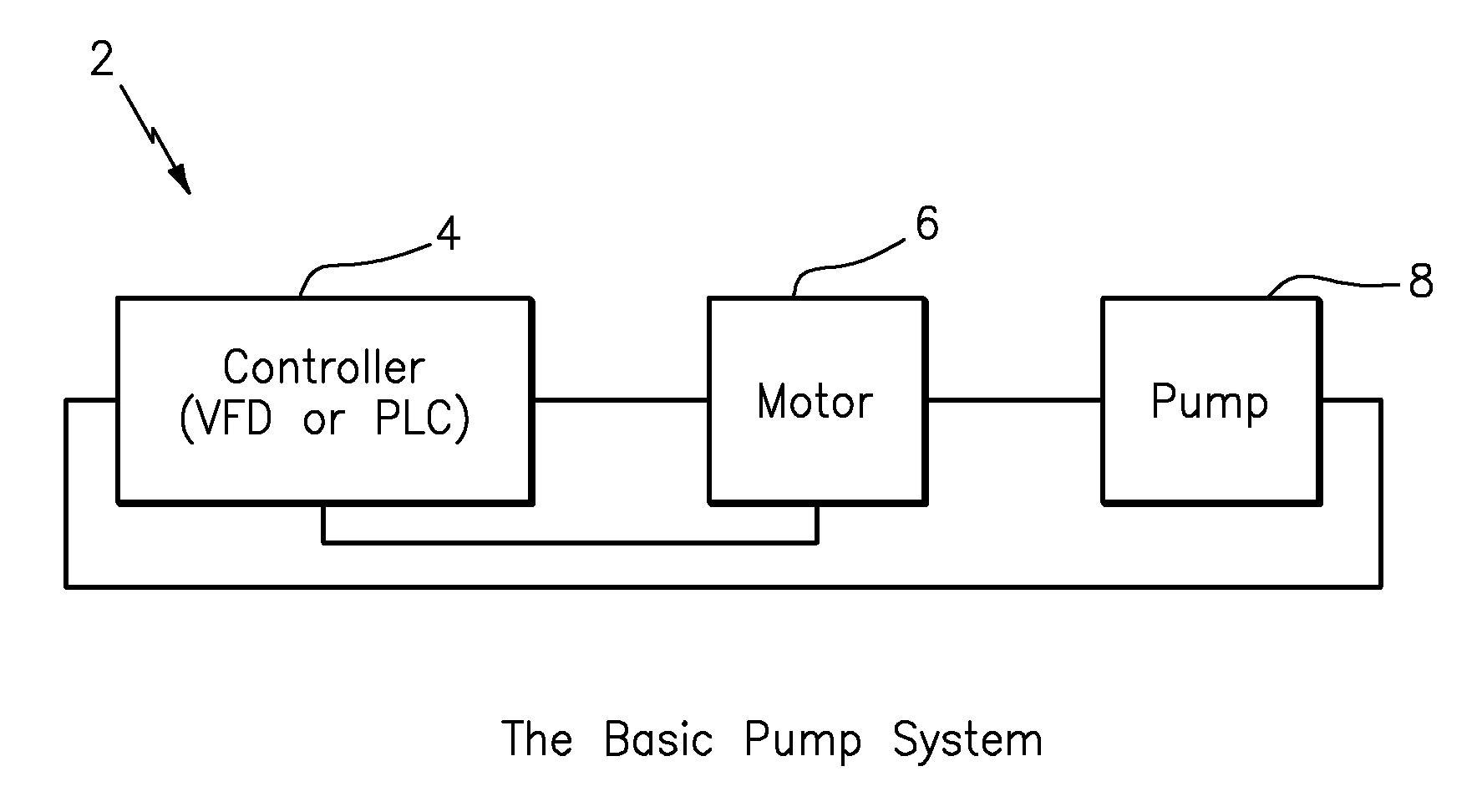Method for optimizing valve position and pump speed in a PID control valve system without the use of external signals
pump speed technology, applied in the field of pumps, can solve the problems of not cannot seeking an optimal pump speed and cannot seek an optimal speed and control valve position from a pid control valve system, so as to achieve the effect of optimizing the valve position
- Summary
- Abstract
- Description
- Claims
- Application Information
AI Technical Summary
Benefits of technology
Problems solved by technology
Method used
Image
Examples
Embodiment Construction
[0018]FIG. 1 shows the basic pump system generally indicated as 2 according to the present invention, having a controller 4, a motor 6 and a pump 8. In operation, and according to the present invention, the controller 4 provides for determining flow reference data as a function of various pump and motor parameters such as speed, torque or power or from calibrated flow curves stored in an evaluation device (not shown), or from an external flow reference such as a flowmeter (not shown); and for utilizing the flow reference data in order to control the pump 8, consistent with that shown and described herein.
[0019]FIG. 2 shows, by way of example, a flowchart generally indicated as 10 having the basic steps 10a and 10b, of the pump flow determination algorithm that may be implemented by the controller 4 according to the present invention. The determined flow value may also be used as an input to a PID control loop to control flow without an external flowmeter or traditional instrumentati...
PUM
 Login to View More
Login to View More Abstract
Description
Claims
Application Information
 Login to View More
Login to View More - R&D
- Intellectual Property
- Life Sciences
- Materials
- Tech Scout
- Unparalleled Data Quality
- Higher Quality Content
- 60% Fewer Hallucinations
Browse by: Latest US Patents, China's latest patents, Technical Efficacy Thesaurus, Application Domain, Technology Topic, Popular Technical Reports.
© 2025 PatSnap. All rights reserved.Legal|Privacy policy|Modern Slavery Act Transparency Statement|Sitemap|About US| Contact US: help@patsnap.com



